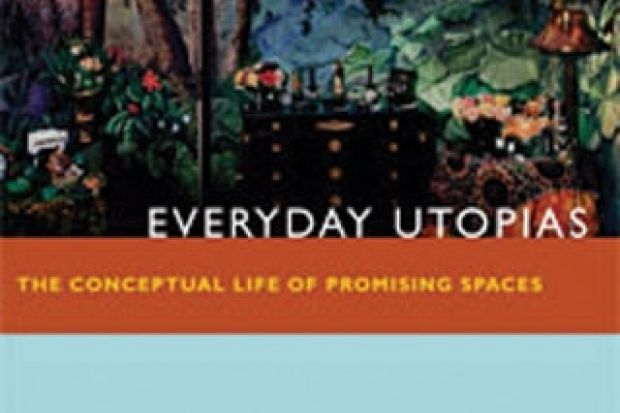Amid recent revivals of grand-scale utopian visions and megaprojects - from universal virtual communities and climate-changing space machines to big data generators and one-size-fits-all laptops - it is refreshing to ponder small-scale real alternatives, not least because we do not ordinarily associate utopias with the “everyday”. Here, Davina Cooper considers six projects that, while not literally perfect, apparently do transform participants’ daily lives.
Her first three case studies focus on equality, care, ethics and pleasure: a 2009-10 UK government effort to expand equality by various non-physical forms of “touching” citizens; different forms of public nudity; and a women-only bathhouse in Toronto focused on making women more comfortable with their bodies. A second set of three focus on trading, property and markets: British Local Exchange Trading Schemes (Lets) allowing the cash-free exchange of goods and services; the long-controversial Summerhill School in Suffolk, jointly governed by students and teachers, even in respect of property management; and Speakers’ Corner in London, where both speakers and listeners can enjoy non-commercial “market play”.
There are inevitably challenges, as Cooper acknowledges, facing those who wish to establish real-world utopias. They must not only transform imperfect human beings and imperfect living and work spaces for the first generations, but must also anticipate and accommodate later generations’ needs, not least avoiding boredom. Readily acknowledged are Marx’s and Engels’ criticisms of contemporaries Charles Fourier, Robert Owen and Henri de Saint-Simon for being “utopian” socialists in crafting excessively rigid blueprints of a future they could hardly predict. By contrast, Marx’s and Engels’ self-proclaimed “scientific” socialism wisely refused to specify precisely what would follow capitalism’s collapse and the proletariat’s triumph.
Cooper also appreciates Marxist Ernst Bloch’s advocacy of “traces” of existing society as potentially more valuable than rigid future blueprints and the simultaneous need for a plurality of visions. Try as she may, however, she cannot escape the dilemma of embracing her six actual everyday utopias while allowing for, in Bloch’s words, the potentials found in the “not yet”. ‘Tis a most delicate balancing act.
In some ways these six case studies are throwbacks to most 19th- and 20th-century American utopian communities that rarely extended beyond their single original site. Only the Shakers successfully established several other sites (19 in total). Barriers ranging from insufficient sustained economic viability to local opposition to the founder’s departure usually proved fatal to duplication, although the death of founder Mother Lee hardly stopped the Shakers.
Everyday Utopias’ audience is disillusioned leftists whose fading hope for radical social and economic change might be revived by Cooper’s book (although Lets have largely failed). Unfortunately, she displays both a remarkable ignorance of her utopias’ many historical precedents and an inflated sense of her own originality. Not content with the conventional meaning of “concept”, she redefines it endlessly without much further illumination. And, in a largely futile effort to extract deep insights about utopias from her subjects’ experiences, she misses such genuinely penetrating works as Kenneth Roemer’s Utopian Audiences: How Readers Locate Nowhere (2003). Most importantly, she seems unaware that, like her six utopias, most earlier utopian communities also failed to focus on “winning votes or on taking over dominant social structures”.
These reservations aside, Everyday Utopias is a provocative work deserving a wide readership. Off to your bathhouses and nudist colonies, ladies and gentlemen!
Everyday Utopias: The Conceptual Life of Promising Spaces
By Davina Cooper
Duke University Press, 296pp, £59.00 and £15.99
ISBN 9780822355557 and 5694
Published 20 December 2013
Register to continue
Why register?
- Registration is free and only takes a moment
- Once registered, you can read 3 articles a month
- Sign up for our newsletter
Subscribe
Or subscribe for unlimited access to:
- Unlimited access to news, views, insights & reviews
- Digital editions
- Digital access to THE’s university and college rankings analysis
Already registered or a current subscriber? Login





